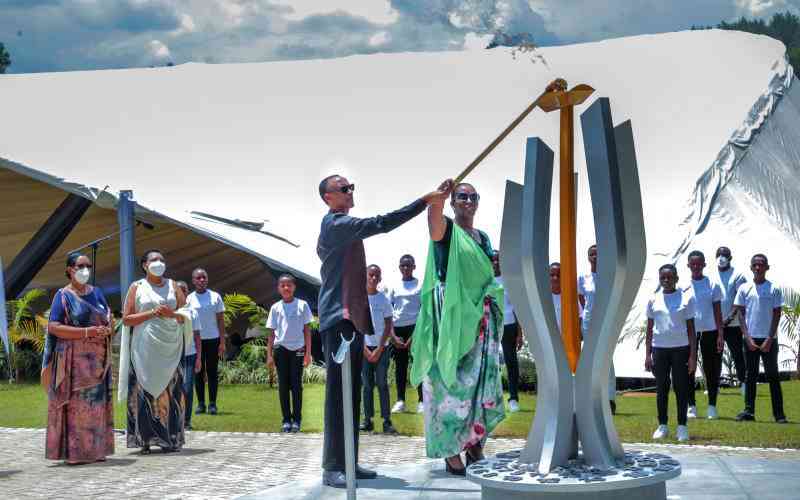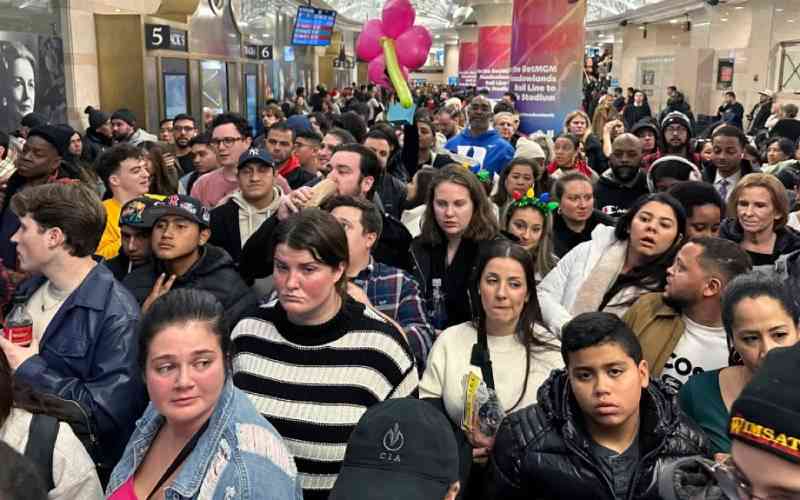By Bill Kembo
Today, I feed you three figures for your contemplation, 6 million, 1 million and 1400.
I will come to these in a short while to help you make sense of them. Please note these numbers are the core of this piece, commit them to heart.
You might be wondering what relation this story has to the numbers I above.
Plenty. Six million is the number of deaths estimated as directly attributable to the Holocaust. In particular, approximately over one million Jewish children were killed in the Holocaust, as were approximately two million Jewish women and three million Jewish men.
Close to one million (or more) are estimated to have died over one hundred days of the madness of April to July of 1994 in the Rwanda Genocide.
And during the post-election violence of 2007 in Kenya, some estimates say thirteen hundred plus people perished. Others place this at over fifteen hundred. Due to a lack of accurate data I will take an average of the two, fourteen hundred.
It is also estimated that nine to ten million Jews lived in Europe during the period of the Nazi lunacy. The six million deaths easily account for 60 per cent of the total Jewish population at the time.
A chilling figure.
In Rwanda, it is estimated that at the time of the Intarahamwe and the Impuzamugambi one hundred days of anarchy, the total population of Rwanda was in the region of nine million. To put the extent of the near annihilation into perspective, one million deaths constitute 11 per cent of the aggregate population, an equally disconcerting percentage.
In Kenya, the Kenya National Bureau of Statistics put the population figures in 2007 at 36.1 million.
Assuming the only deaths in 2007 were attributable to the PEV, with a figure of fourteen hundred deaths, this comes to 0.039 per cent of the total population at the time.
My contention is that we are nowhere close to have learnt anything since. Take the holocaust for example, at an average of six out of every 10 Jews being slaughtered, if this were Nairobi now, this would mean that with a population estimated at five million, at least three million would be dead.
Yes three million. Say you lived in a village of ten thousand, if you were caught in the middle of such carnage; you would wake up to find only four thousand persons left.
To put this into perspective and bring in the lesson and the learning bit of this piece, the chances of your immediate family member, relative or neighbor dying is greatly increased with such an astonishing average.
Stay informed. Subscribe to our newsletter
And that according to me is the only time we truly learn something, when it hits home, when we have personal testimony. But when I wake up, like I did in early 2008 with all my neighbors alive, and all my relatives in relatively good health not to mention I lost no friends in the chaos, then I tend to forget with unhindered ease. I simply have no reminders of the chaos besides the images and the stories of others’ sufferings I hear and watch on television. I have no personal testament.
The numbers do count. And as sad and as difficult, and maybe as callous as this may sound, we lost just too few during the 2007 PEV to have learnt anything.
The only people who know what peace, love and unity really count for are the Kenyans who personally lost relatives, neighbors, limbs, those who were raped and those that lost property. These are the ones with learnt lessons.
The rest of us are just lookers-on.Truth be told, painful as it is, if there had been any lessons learned, we would by now have housed all the legitimate IDPs living in squalor, we would by now have established the equivalent of the Gacacas that Rwanda popularly set up.
We would have seen many individuals and groups and their members being hauled away to prison. We would have setup memorials similar to the Holocaust Memorial in Berlin, Germany to act as a constant reminder especially to those like myself who get themselves with no personal testimony of the extent to which human beings can go in order to make selfish gain.
In place of “prayer” rallies being the highlight in our media, we’d be forced over and over again to see the gory images of those innocents burnt to death in Naivasha homes and the Kiambaa Church in Eldoret just so that we are not tempted to forget.
For us not to forget, we need to have constancy of reminders, a barrage of images and the tales of the people, not the numbers. We will need to name them, both the perpetrators, but most importantly the victims.
They were not just statistics, these were mothers, fathers, brothers, sisters and friends and we owe them. We owe them because we let them down. WE REFUSED TO LEARN, and WE REFUSED TO SPEAK OUT. WE DID NOT RISE ABOVE TRIBE.
If we won’t learn from the pain at home, let us at the least try and pick up from the experiences of others. I pray that it doesn’t take a catastrophe as big as the Rwanda genocide or the holocaust to drive sense into us. From their magnitudes, we might not get a second chance. But in God we trust. God bless Kenya.
The writer is the Network & Communications Infrastructure Administrator at the Standard Group.
[email protected].
 The Standard Group Plc is a
multi-media organization with investments in media platforms spanning newspaper
print operations, television, radio broadcasting, digital and online services. The
Standard Group is recognized as a leading multi-media house in Kenya with a key
influence in matters of national and international interest.
The Standard Group Plc is a
multi-media organization with investments in media platforms spanning newspaper
print operations, television, radio broadcasting, digital and online services. The
Standard Group is recognized as a leading multi-media house in Kenya with a key
influence in matters of national and international interest.
 The Standard Group Plc is a
multi-media organization with investments in media platforms spanning newspaper
print operations, television, radio broadcasting, digital and online services. The
Standard Group is recognized as a leading multi-media house in Kenya with a key
influence in matters of national and international interest.
The Standard Group Plc is a
multi-media organization with investments in media platforms spanning newspaper
print operations, television, radio broadcasting, digital and online services. The
Standard Group is recognized as a leading multi-media house in Kenya with a key
influence in matters of national and international interest.








